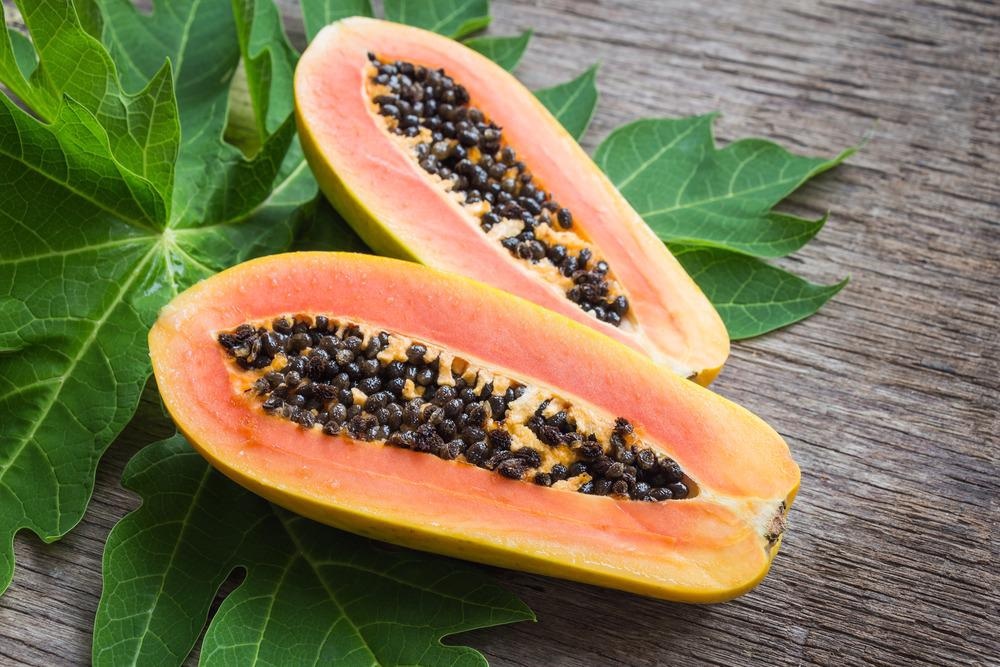A novel technique to synthesize and characterize zinc oxide-based nanoparticles using papaya leaf extract is presented in the study submitted to the journal Materials Today: Proceedings.

Study: Green synthesis and characterization of ZnO nanoparticles-A novel approach using Carica papaya leaf extract. Image Credit; Still AB/Shutterstock.com
Opening New Horizons with Nanotechnology
Nanotechnology has grown dramatically in recent years due to its applications in healthcare, chemistry, and biological technology. Developments in this area have created new outlooks in nanoscience, notably in the delivery of drugs, genetics, medicine, and biological sensing, with the help of the fundamental building blocks of nanotechnology, nanoparticles (NPs).
One of several remarkable aspects of NPs is their exceptional surface-to-volume ratio. This property of NPs allows them to become more sensitive than regular bulk material due to atoms on the exterior being more energetic than the atoms in the center.
NPs can be created using various physical, biological, or chemical methods. These methods include hydrothermal processing, laser ablation, sol-gel synthesis, lithography, and other physicochemical methods; however, these techniques require specialized equipment and experienced workers.
Nanotechnology – Does it Come in Green?
Recent research demonstrates the relevance of metal oxide synthesis of NPs using green technology, where various metal oxides such as zinc oxide, silver oxide, nickel oxide, and others are gaining prominence.
Green nanotechnology is an innovative and environmentally friendly approach for nanotechnology development with applications in multiple domains, such as the pharmaceutical industry, biomedicine, solar electrical components development, cosmetics, and several other sectors. The green synthesis process produces NPs that are low in cost, non-hazardous, and biodegradable at the same time.
This eco-friendly synthesizing technique uses organic materials such as flower, leaf, and root extracts, as well as microorganisms such as bacteria, fungus, and algae. This use of organic substances ultimately minimizes the requirement of any toxic compounds for NP synthesis.
The Power of Zinc Oxide
The synthesis of zinc oxide-based natural product NPs using ecologically green benign approaches has been prioritized by current researchers to avoid the use of harmful chemicals. This has resulted in an environmentally friendly, non-toxic procedure that yields zinc oxide nanoparticles. These nanoparticles have remarkable antioxidant, antibacterial, and anticancer properties and are therefore employed extensively in healthcare facilities.
At about 25 degrees Celsius, the zinc oxide-based natural product NPs exhibit a 3.3 ev band-gap and a binding energy excitation of roughly 60 mev, as well as a high surface-area-to-volume proportion combined with excellent transparency.
Furthermore, according to the United States Food and Drug Administration (USFDA), zinc oxide and other zinc-based compounds are generally recognized as safe materials. Owing to their excellent biological stability and relatively low toxicity, zinc oxide NPs are well investigated with several potential uses in laser diodes, ultraviolet light detectors, and gas sensors, among others.
How Papaya Leaves Can Help to Synthesize Zinc Oxide
In this study, the team demonstrated for the very first time the production of zinc oxide-based natural product NPs in a green synthetic manner employing Carica papaya leaf extract and zinc acetate.
Carica papaya is considered a therapeutic plant that belongs to the Caricaceae family. This plant is also known as papaw/pawpaw. The papaya plant's bark, fruit, and leaves are used to treat a variety of diseases, including eczema, constipation, amenorrhea, cancer, malaria, diabetes, dengue, and syphilis, among others.
According to the research, the leaves of the Carica papaya and its fruit extracts are employed as a remedy for dengue. The extracts work by increasing platelet and RBC count, which makes Carica papaya efficient against RBC sickling as well.
The plant's stem extract was shown to have leishmanicidal and schistosomicidal properties. The extracts are high in vitamins, flavonoids, phenols, antioxidants, and, proteolytic enzymes, which function as powerful anticancer, antibacterial, and antioxidant agents.
Results of the Study
The team effectively accomplished the task of producing zinc oxide-based natural product NPs using the Carica papaya plant by employing green synthesis. The team noted that the generated NPs were 50 nm in size with a wurtzite architecture.
It was highlighted by the team that the green synthesis process had a lower cost, was environmentally friendly, and had superior qualities concerning effectiveness compared to other traditional methods.
The team concluded that the Carica papaya plant's leaf extract is a highly efficient reductant in the manufacturing of zinc oxide-based natural product NPs with utilization in many domains.
Reference
Nizamuddin, S., Hymavathi, A., Yaku, G., & Kumar, U. (2022). Green synthesis and characterization of ZnO nanoparticles-A novel approach using Carica papaya leaf extract. Materials Today: Proceedings, Available at: https://www.sciencedirect.com/science/article/pii/S2214785322033302?via%3Dihub
Disclaimer: The views expressed here are those of the author expressed in their private capacity and do not necessarily represent the views of AZoM.com Limited T/A AZoNetwork the owner and operator of this website. This disclaimer forms part of the Terms and conditions of use of this website.